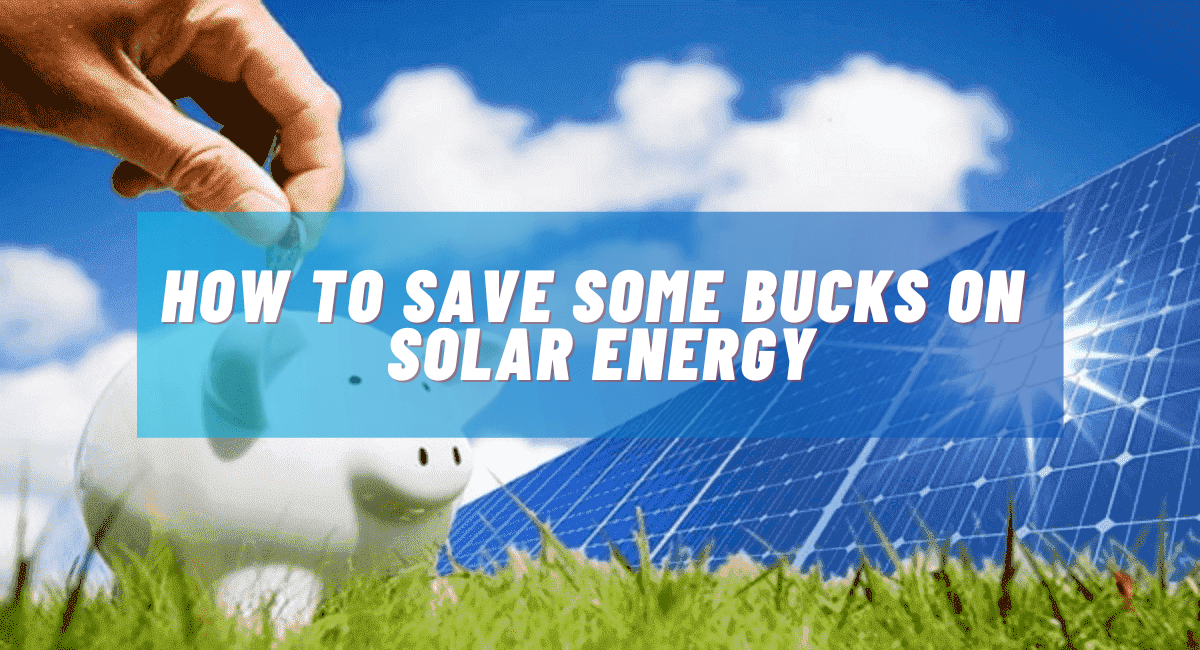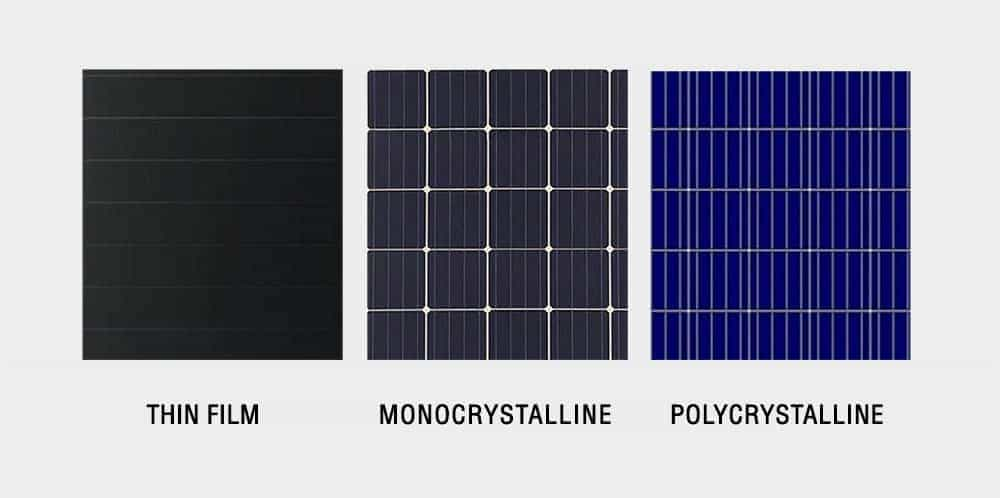On average, U.S. customers save about $1,500 a year by going solar – $37,500 over the course of 25 years. But for individual solar energy systems, these savings can vary from $10,000 – $90,000 depending on roof size, sunlight exposure, local energy rates, and solar incentives.
Let’s be honest. While customers are delighted to reduce their carbon footprint by replacing fossil fuel power with clean energy, they generally go solar to reduce something else: their power bill.
So when your prospects consider a solar power system, they’re pretty focused on its potential to lower costs and increase their nest egg. Which means that they have one question above all: How much will solar panels save me?
Since the answer can vary among customers, each deserves a clear, accurate, thorough financial estimate. Here, we’ll look through national and state averages before detailing which factors will affect your customers’ individual solar savings.
How much does Solar Panels Installation Cost
If you’re interested in installing solar panels, you’ll want to know how much they’ll cost you. Solar installation can be a costly endeavor, but it’s definitely worth it if you’re looking to save money on your energy bills.
Across the United States, more and more people are installing solar panels to help offset their energy costs.
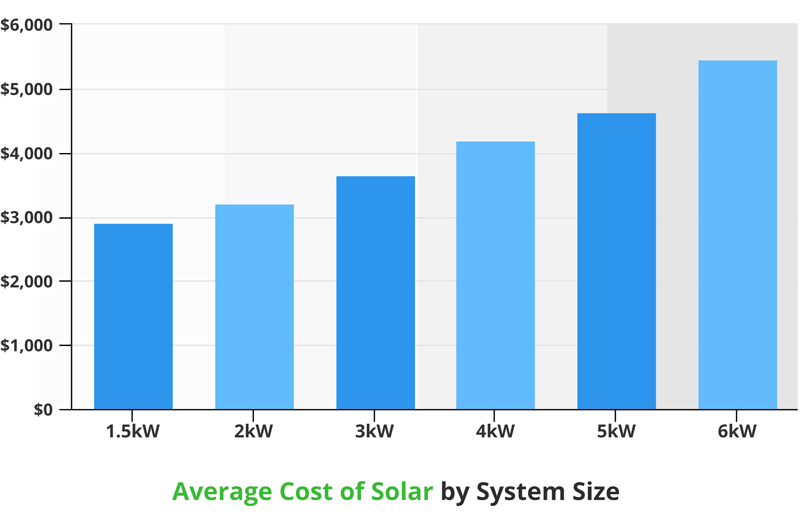
In most cases, the cost of solar panels will range from around $5,000 to $10,000. However, this price can vary depending on the size and type of panel that you choose. So if you have any questions about the cost of solar installations, we will discuss some factors that will affect the cost of your solar panel installation.
Factors influence Solar Panels Installation Cost
There is a lot of information on the internet about how much solar panels installation costs. However, it can be hard to figure out what to consider when calculating the price.
In this article, we will discuss some factors that will affect the cost of your solar panel installation. We will also provide some tips to help you get the best deal on your solar panel installation.
Location – Where you live
There are many factors that will affect the cost of installing solar panels. It can be difficult to estimate the cost of solar panel installation, as the prices vary depending on location. If you live in an area that receives a lot of sunlight, solar panels will cost less to install. If you live in an area that is cloudy or has low light levels, solar panels will cost more to install.
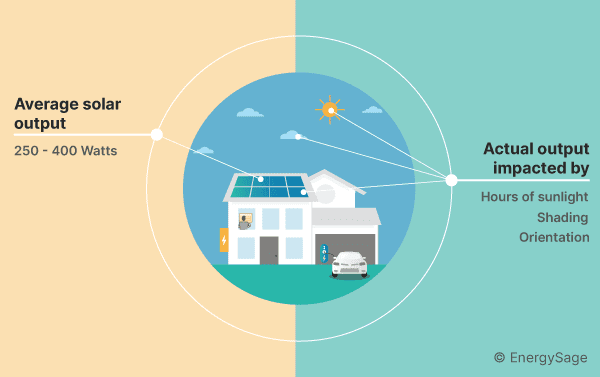
Knowing your location and the surrounding environment will help you determine what kind of solar panels are best for you and your property. – Compare quotes based on your location, the size of the system, and other factors.
How much are the Local Average Solar Energy Prices
The cost of electricity, grid versus solar affects how much your customers will save. Some parts of America have cheap electricity from the grid (the price may average $8-$9 per kilowatt hour), while other areas charge twice as much for the same amount of power. For instance, the average electric rates in Connecticut are over $18 per kilowatt hour.
When a state has a higher grid rate, many ratepayers find more value in going solar. However, this depends on what the cost to install solar panels is compared to the rates and how these rates are compared with the general electric rates for that specific year.
Utility rates vary not only by state but also within each state. So check the utilities of your customers’ jurisdiction before estimating their savings.
How many solar panels do you need?
To get the most out of your solar panels, you’ll need to determine how many you’ll need. The number of solar panels you need will be based on:
- How much power do you want your system to produce you need to determine,
- The size of your roof.
How much Electricity usage you have
To calculate how much it will cost to install solar panels, you first need to find out how much electricity your home uses. There are a few ways to do this. One way is to use a meter that measures the amount of electricity you use.
Another way is to estimate your home’s daily electricity usage and multiply that by the installed price per watt. Once you have your estimate, you can contact a local solar installation company to find out how much they would charge for installing the panels.
Every household and business has unique energy requirements, which is why solar installers must review customers’ electric bills for the past year before giving them a proposal.
Your Roof Size
The way you increase the amount of solar savings your customer gets from installing solar panels is by having a bigger roof because that gives you more space for solar panels and equipment.
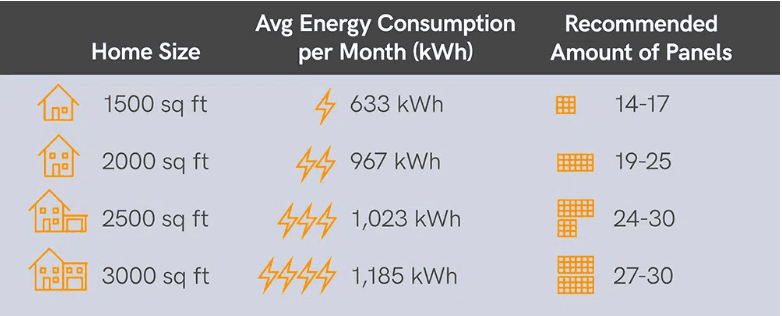
It is important for homeowners to carefully calculate the amount of solar-available roofs. The next step would be calculating the size of the solar system given chimneys, air conditioners, generators, or other appliances that might be present.
A good designer will use solar-specific software to plan each solar system size according to these variables.
Your Choice of panels for Installation
There are many types of solar panels, and the price you pay for them will vary depending on the type of panel you choose. You can select from a variety of solar panel brands and models, including those made by Tesla.
You can choose from a variety of types of solar panels, including thin-film, polycrystalline, and mono-crystalline. The type of panel you choose will affect the cost of your installation.
- Thin-film panels are the cheapest option and require the least amount of space for installation. They also have the lowest efficiency rating, so they generate the least amount of energy.
- Polycrystalline panels are slightly more expensive than thin-film panels but are of better quality. They have a higher efficiency rating and can be installed on larger surfaces.

- Mono-crystalline panels are the most expensive option and have the highest efficiency rating. They can be installed on smaller surfaces and are often used in commercial settings.
Federal and state incentives on Solar Energy
There are a variety of tax rebates, funded by the government, that are available for installing solar panels. These incentives generally vary between federal and state governments but generally speaking, the more solar panels you install, the more rebates you will receive.
Rebates can be as much as cash payments or tax credits that reduce your overall tax liability. Some states also offer Infrastructure Financing and Grid Integration Rebates which can provide an upfront rebate or lower electricity rates over time.
Locations with high energy costs and/or limited access to grid resources may be eligible for Solar Renewable Energy Credits (SRECs).
Solar Panels purchasing options
Leasing
The main advantage of leasing is that it can be flexible and cost-effective. You don’t have to worry about upfront costs, and you can cancel the agreement at any time without penalty.
The downside is that you may not get the best overall deal because the system owner may increase rates over time. Additionally, if you need to upgrade or replace the solar panels, you’ll likely have to return to the leasing company.
Loans
Loans usually have higher costs due to interest rates and other factors, but they can be a good option if you want to be able to use the panels for a long time.
Power purchase agreements (PPA)
A Power Purchase Agreement is a long-term contract under which businesses agree to purchase electricity directly from renewable energy generators. PPAs provide financial certainty to the business and the project developer, which removes a significant roadblock to building new renewable facilities.
Average Solar Panels Installation Cost by States
If you’re interested in installing solar panels on your property, it’s important to know the average installation cost by state. According to a report from The Solar Foundation, the average installation cost for a solar system across all 50 states was $4,453 in 2022.
This cost varies a lot depending on the state and the size of the solar system, but it’s generally easier to find funding for a larger system. In some states, installation costs can be as low as $2,500.
| State | Starting cost for 6-kW system* | Average cost per watt** | 2020 federal tax credit value (26%) | 2022 federal tax credit value (22%) |
|---|---|---|---|---|
| Alabama | $13,706 | $2.45 | $3,564 | $3,015 |
| Alaska | $13,454 | $2.41 | $3,498 | $2,960 |
| Arizona | $13,680 | $2.67 | $3,557 | $3,010 |
| Arkansas | $14,713 | $2.63 | $3,825 | $3,237 |
| California | $15,240 | $2.68 | $3,962 | $3,353 |
| Colorado | $17,100 | $2.44 | $4,446 | $3,762 |
| Connecticut | $15,540 | $2.86 | $4,040 | $3,419 |
| District of Columbia | $15,720 | $2.88 | $4,087 | $3,458 |
| Delaware | $15,300 | $2.65 | $3,978 | $3,366 |
| Florida | $13,920 | $2.41 | $3,619 | $3,062 |
| Georgia | $15,840 | $2.33 | $4,118 | $3,485 |
| Hawaii | $19,560 | $2.67 | $5,086 | $4,303 |
| Idaho | $17,100 | $2.52 | $4,446 | $3,762 |
| Illinois | $16,740 | $2.57 | $4,352 | $3,683 |
| Indiana | $15,300 | $2.49 | $3,978 | $3,366 |
| Iowa | $14,160 | $2.53 | $3,682 | $3,115 |
| Kansas | $13,353 | $2.39 | $3,472 | $2,882 |
| Kentucky | $13,101 | $2.34 | $3,406 | $2,882 |
| Louisiana | $15,660 | $2.38 | $4,072 | $3,445 |
| Maine | $16,073 | $2.87 | $4,179 | $3,536 |
| Maryland | $15,540 | $2.74 | $4,040 | $3,419 |
| Massachusetts | $16,440 | $2.87 | $4,274 | $3,617 |
| Michigan | $16,020 | $2.66 | $4,165 | $3,524 |
| Minnesota | $17,280 | $2.74 | $4,493 | $3,802 |
| Mississippi | $14,763 | $2.64 | $3,838 | $3,248 |
| Missouri | $14,461 | $2.59 | $3,760 | $3,181 |
| Montana | $16,560 | $2.42 | $4,306 | $3,643 |
| Nebraska | $15,820 | $2.83 | $4,113 | $3,480 |
| Nevada | $14,760 | $2.61 | $3,838 | $3,247 |
| New Hampshire | $17,460 | $2.83 | $4,540 | $3,841 |
| New Jersey | $14,520 | $2.77 | $3,775 | $3,194 |
| New Mexico | $16,680 | $2.44 | $4,337 | $3,670 |
| New York | $15,900 | $2.86 | $4,134 | $3,498 |
| North Carolina | $14,040 | $2.49 | $3,650 | $3,089 |
| North Dakota | $13,555 | $2.42 | $3,524 | $2,982 |
| Ohio | $14,400 | $2.50 | $3,744 | $3,168 |
| Oklahoma | $14,667 | $2.62 | $3,813 | $3,227 |
| Oregon | $15,060 | $2.50 | $3,916 | $3,313 |
| Pennsylvania | $15,420 | $2.38 | $4,009 | $3,392 |
| Rhode Island | $16,200 | $2.69 | $4,212 | $3,564 |
| South Carolina | $16,500 | $2.62 | $4,290 | $3,630 |
| South Dakota | $13,535 | $2.39 | $3,519 | $2,978 |
| Tennessee | $13,909 | $2.49 | $3,616 | $3,060 |
| Texas | $14,820 | $2.60 | $3,853 | $3,260 |
| Utah | $15,420 | $2.66 | $4,009 | $3,392 |
| Vermont | $16,620 | $2.85 | $4,321 | $3,656 |
| Virginia | $15,780 | $2.66 | $4,103 | $3,472 |
| Washington | $14,040 | $2.73 | $3,650 | $3,089 |
| West Virginia | $14,763 | $2.64 | $3,838 | $3,248 |
| Wisconsin | $17,580 | $2.60 | $4,571 | $3,868 |
| Wyoming | $14,360 | $2.57 | $3,734 | $3,159 |
Saving on Solar Incentives And Tax Breaks
If you’re interested in installing solar panels, you may want to take advantage of tax breaks and incentives that are available.
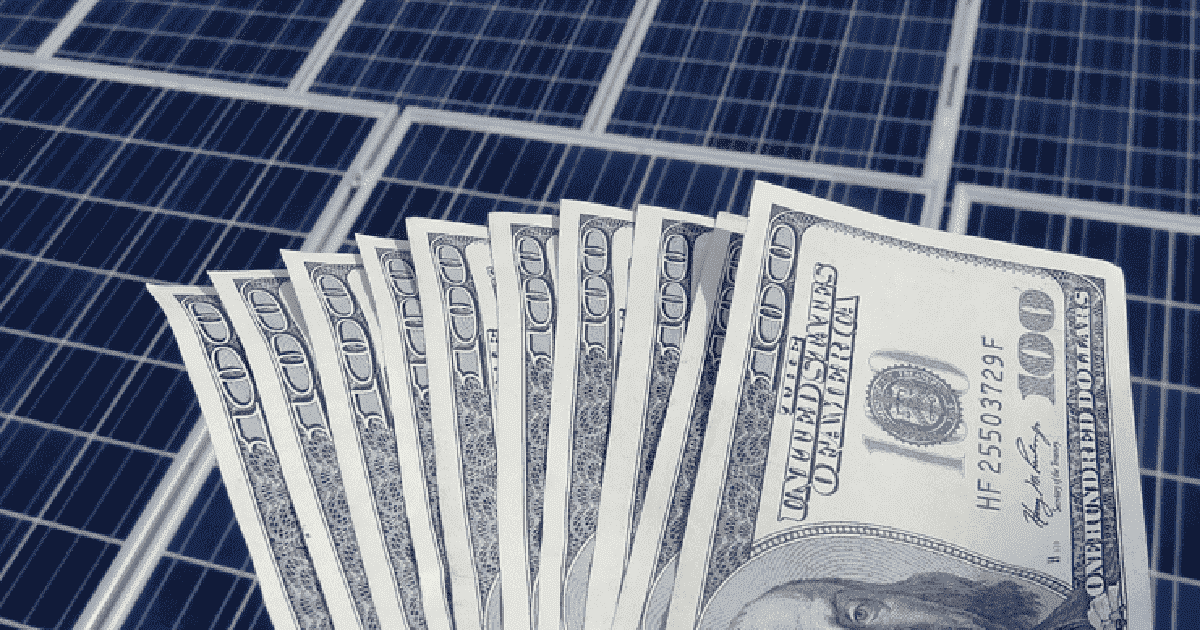
In some cases, you can receive a large tax break if you install solar panels during the first few years after you purchase your home. There are also many ways to reduce your solar panel installation costs. You can find information about these incentives and other savings below.
Net Metering
Solar energy generators are able to sell their power back to the utility system. Net metering policies help them by rewarding these customers every month for their excess energy output. This policy lowers the cost of operating a solar system for the user.
Different states’ net metering policies create various incentives and allow operating solar production. However, some examples of these policies are state-based and others differ by the utility. Regardless of the state-by-state policy, net metering lowers your customers’ remaining utility bills.
Rebates
Solar panels are cheaper than ever, and many utility companies will pay you up to $2,000 to install one on your roof. You could make that much money in three years compared with the 25-year return on the investments made in solar projects.
You can find a list of renewable energy policies in your area at the Database of State Incentives for Renewables & Efficiency
Federal Solar Tax Credit
To take full advantage of the Federal solar tax credit, you will need to install solar panels and use the electricity they produce. The tax credit is a significant incentive for solar panel installation, and it can be worth up to 30% of the purchase price of the system.
To qualify for the solar tax credit, your roof must be at least 16 Watts per square foot. If your home has less than 25 square feet of rooftop space, you can still qualify for a partial credit based on how much electricity your system produces.
Is Solar System worth the bucks spent?

There are a lot of benefits to solar power, but is it really worth the investment? The short answer is yes. Solar systems can save you money in the long run by reducing your energy bill, helping you save on fossil fuels, and creating green jobs.
There are other reasons to go solar, too. It can help reduce climate change, protect our environment, and create a more sustainable future. There are many pros and cons to solar systems.
The biggest pro is that it’s environmentally friendly. You don’t have to deal with the toxins that come from using fossil fuels. Another pro is that you can use solar systems to power your home or business without having to rely on the grid.
The con of solar systems is that they can be expensive. It can cost a lot of money to buy and install a solar system, but it could be worth it in the long run.
If you’re thinking about installing a solar system, make sure to talk to a qualified installer about all the options available to you.
How much solar panels on average saves on your electricity bills
If you own your home and don’t have solar panels, you might be wondering how much electricity your home is using without solar panels. Solar panels can save you money on your electricity bill depending on the size of your roof and the amount of sunlight that falls on it.
Overall, most people find that installation and maintenance of solar panels pay for themselves in just a few years. To calculate how much solar Panels will save you on your electric bill, first estimate the annual energy consumption of your home. Then multiply this number by the average solar panel output (in watts) to get an estimate of how much money you would save each year.
For example, if an energy audit estimates that your home consumes 300 kWh/year and a 4-watt solar panel produces 20 kWh/month, then installing 4 solar panels would realistically save 280 kWh/year or $20/month.
A larger solar panel might produce more or less than 20 kWh/month, so use this calculation as a ballpark estimate only – there is no guarantee that installing a large number of solar panels will result in significant savings.
If you have decided to go for the Solar Panels installation, Check read below
How are solar panels installed?
Installing solar panels is one of the most difficult processes. It’s an expensive process, between installation and all your other costs. Here is a step-by-step guide on how it goes for those who are interested.
Purchase your solar panel equipment:
You’ll probably end up choosing from a variety of options depending on your personal situation, but understanding how solar grids work is usually a helpful starting point in learning which model will work best for you.
Before you buy a system, it’s a good idea to hire an electrical engineering consultant. They can help make sure your needs are met, that your system will be safe and reliable, and they’ll save you money to boot.
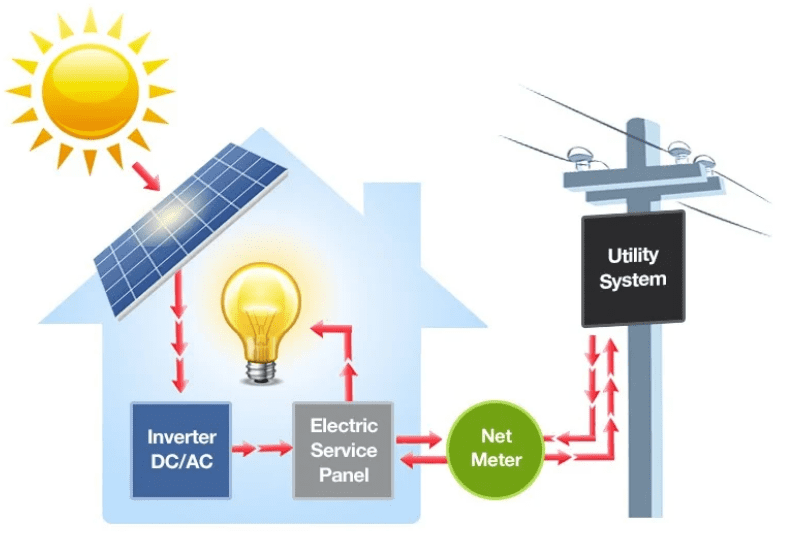
A solar installation engineer will visit your property:
After you sign your contract, one sign of progress is meeting with an engineer at your home. They will make sure that your roof can support solar panels and look into whether or not your circuit breaker or electrical panel is capable of supplying enough electricity for solar panels. Then it’s time to submit the forms required by the solar panel installation company and start waiting.
Fill out the paperwork:
Your installer will take care of most of the complicated paperwork – including federal and state tax incentives and rebates, PACE and other clean energy financing initiatives, and solar renewable energy certificates (SRECs) – but you need to know some about what your installer is filing where.
Your installer will also be knowledgeable about local building permits and restrictions that might apply to your home. From there, your installer will order the equipment after you sign the final contract.
Let the pros do all the heavy lifting:
The installation takes place in the presence of experts. First, a solar panel installer covers your roof to make sure it’s still in good shape from the engineer’s visit.
Next, wiring is installed so you can connect your panels to the power system. Racking is then attached to support the panels which go on top of the racks when mounted on the roof.
Finally, an inverter and control circuit are connected to the panels, providing them with the electric current that they need to be productive.
One last check:
After your solar panels have been installed, you need to make sure there aren’t any mistakes or violations of electrical or roof setback codes. Your government representative should visit and make that happen.
Someone from your local government inspects your panels after they have been wirelessly installed. This process is designed to make sure guidelines have been followed and that the home has been properly adapted for solar energy generation.
Flip the switch:
When you are at your house, your local electric company sends a representative who quickly connects your solar panel system to their grid.

